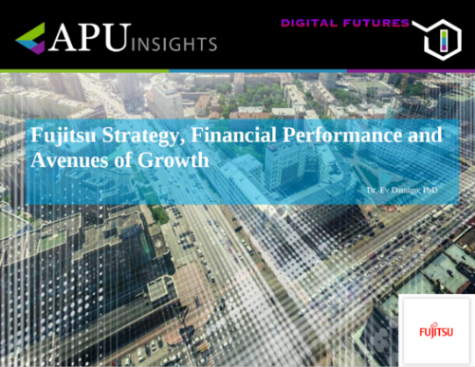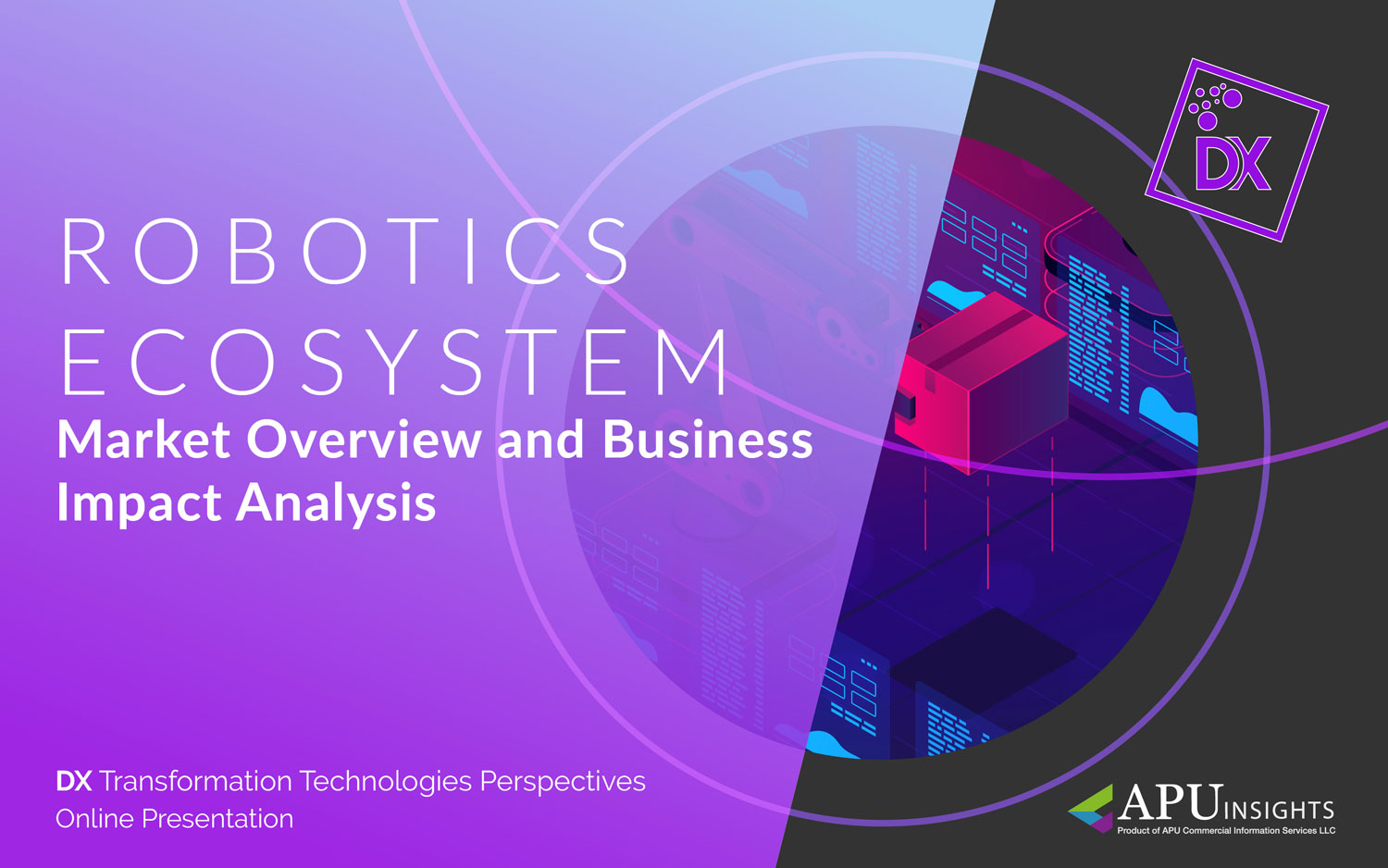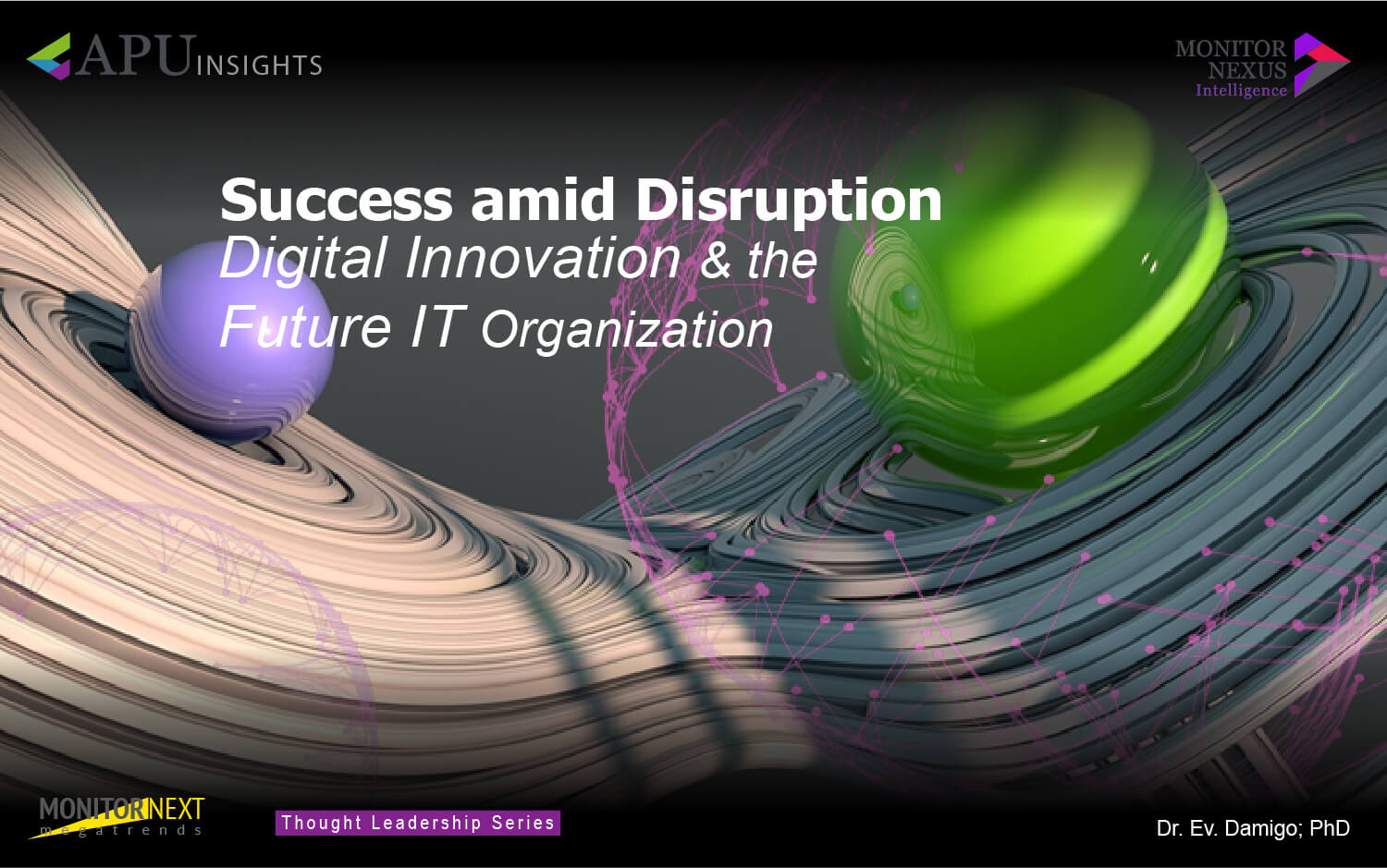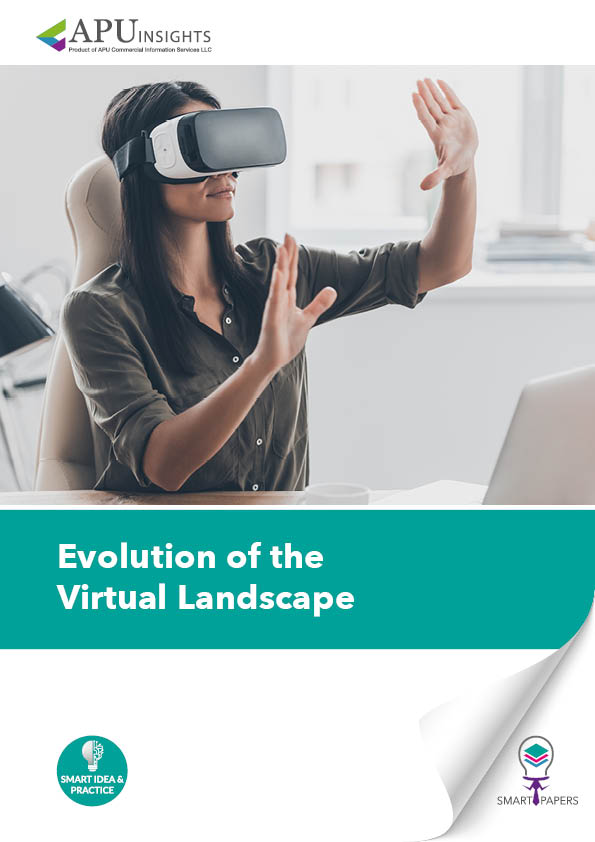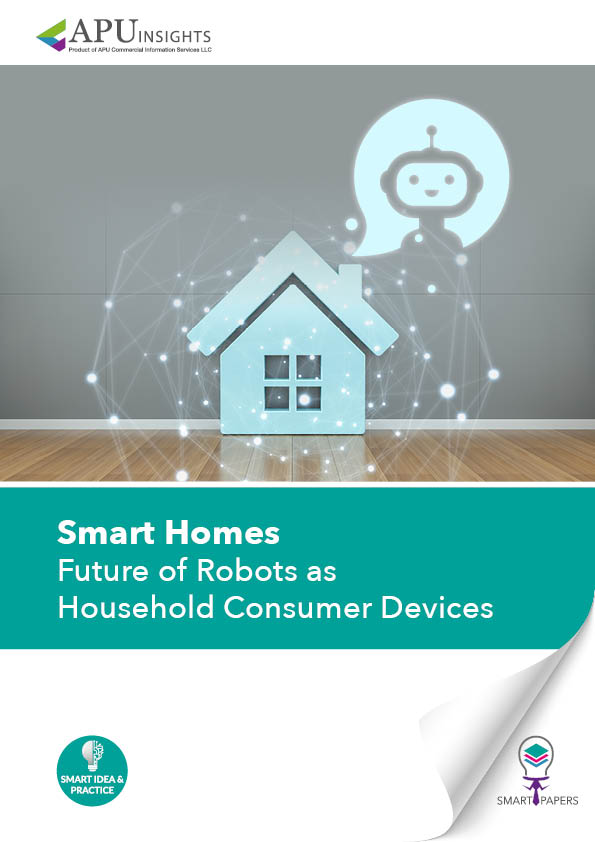
Hyperconnected Enterprises | Entering the era of Intelligent Connectivity and 6G communication technologies
Pages : 45
Publisher : APU Insights | Monitor Nexus Intelligence
Electronic PDF
Content Coverage %
Regions Coverage %

Hyperconnected Enterprises | Entering the era of Intelligent Connectivity and 6G communication technologies
Sixth-generation wireless communications, commonly known as 6G, is a promising approach to integrating terrestrial, airborne, and maritime communications, providing additional reliability and speed without compromising required latency. The upcoming explosive connectivity will enable further scalability of many heterogeneous IoT devices that will support innovative services such as intelligent traffic, environmental monitoring, augmented reality and virtual reality, video transmission in connected vehicles and drones, etc. This fact is further reinforced by the projected growth of the IoT market to 25 billion devices by 2025. However, the establishment of specific 6G standards is underway, and it is estimated that international standardization bodies will define the standards for 6G by 2030. As a result, information and communication technologies (ICT) should be flexible and robust with respect to the massive data generated by mobile devices due to urbanization and smart city ecosystems such as smart transportation, smart healthcare, and smart buildings.

Objectives and Study Scope
This study has assimilated knowledge and insight from business and subject-matter experts, and from a broad spectrum of market initiatives. Building on this research, the objectives of this market research report is to provide actionable intelligence on opportunities alongside the market size of various segments, as well as fact-based information on key factors influencing the market- growth drivers, industry-specific challenges and other critical issues in terms of detailed analysis and impact.
The report in its entirety provides a comprehensive overview of the current global condition, as well as notable opportunities and challenges.
The analysis reflects market size, latest trends, growth drivers, threats, opportunities, as well as key market segments. The study addresses market dynamics in several geographic segments along with market analysis for the current market environment and future scenario over the forecast period.
The report also segments the market into various categories based on the product, end user, application, type, and region.
The report also studies various growth drivers and restraints impacting the market, plus a comprehensive market and vendor landscape in addition to a SWOT analysis of the key players.
This analysis also examines the competitive landscape within each market. Market factors are assessed by examining barriers to entry and market opportunities. Strategies adopted by key players including recent developments, new product launches, merger and acquisitions, and other insightful updates are provided.
Research Process & Methodology

We leverage extensive primary research, our contact database, knowledge of companies and industry relationships, patent and academic journal searches, and Institutes and University associate links to frame a strong visibility in the markets and technologies we cover.
We draw on available data sources and methods to profile developments. We use computerised data mining methods and analytical techniques, including cluster and regression modelling, to identify patterns from publicly available online information on enterprise web sites.
Historical, qualitative and quantitative information is obtained principally from confidential and proprietary sources, professional network, annual reports, investor relationship presentations, and expert interviews, about key factors, such as recent trends in industry performance and identify factors underlying those trends - drivers, restraints, opportunities, and challenges influencing the growth of the market, for both, the supply and demand sides.
In addition to our own desk research, various secondary sources, such as Hoovers, Dun & Bradstreet, Bloomberg BusinessWeek, Statista, are referred to identify key players in the industry, supply chain and market size, percentage shares, splits, and breakdowns into segments and subsegments with respect to individual growth trends, prospects, and contribution to the total market.
Research Portfolio Sources:
Global Business Reviews, Research Papers, Commentary & Strategy Reports
M&A and Risk Management | Regulation

The future outlook “forecast” is based on a set of statistical methods such as regression analysis, industry specific drivers as well as analyst evaluations, as well as analysis of the trends that influence economic outcomes and business decision making.
The Global Economic Model is covering the political environment, the macroeconomic environment, market opportunities, policy towards free enterprise and competition, policy towards foreign investment, foreign trade and exchange controls, taxes,
financing, the labour market and infrastructure.
We aim update our market forecast to include the latest market developments and trends.
Review of independent forecasts for the main macroeconomic variables by the following organizations provide a holistic overview of the range of alternative opinions:
As a result, the reported forecasts derive from different forecasters and may not represent the view of any one forecaster over the whole of the forecast period. These projections provide an indication of what is, in our view most likely to happen, not what it will definitely happen.
Short- and medium-term forecasts are based on a “demand-side” forecasting framework, under the assumption that supply adjusts to meet demand either directly through changes in output or through the depletion of inventories.
Long-term projections rely on a supply-side framework, in which output is determined by the availability of labour and capital equipment and the growth in productivity.
Long-term growth prospects, are impacted by factors including the workforce capabilities, the openness of the economy to trade, the legal framework, fiscal policy, the degree of government regulation.
Direct contribution to GDP
The method for calculating the direct contribution of an industry to GDP, is to measure its ‘gross value added’ (GVA); that is, to calculate the difference between the industry’s total pretax revenue and its total boughtin costs (costs excluding wages and salaries).
Forecasts of GDP growth: GDP = CN+IN+GS+NEX
GDP growth estimates take into account:

Market Quantification
All relevant markets are quantified utilizing revenue figures for the forecast period. The Compound Annual Growth Rate (CAGR) within each segment is used to measure growth and to extrapolate data when figures are not publicly available.
Revenues
Our market segments reflect major categories and subcategories of the global market, followed by an analysis of statistical data covering national spending and international trade relations and patterns. Market values reflect revenues paid by the final customer / end user to vendors and service providers either directly or through distribution channels, excluding VAT. Local currencies are converted to USD using the yearly average exchange rates of local currencies to the USD for the respective year as provided by the IMF World Economic Outlook Database.
Industry Life Cycle Market Phase
Market phase is determined using factors in the Industry Life Cycle model. The adapted market phase definitions are as follows:

The Global Economic Model
The Global Economic Model brings together macroeconomic and sectoral forecasts for quantifying the key relationships.
The model is a hybrid statistical model that uses macroeconomic variables and inter-industry linkages to forecast sectoral output. The model is used to forecast not just output, but prices, wages, employment and investment. The principal variables driving the industry model are the components of final demand, which directly or indirectly determine the demand facing each industry. However, other macroeconomic assumptions — in particular exchange rates, as well as world commodity prices — also enter into the equation, as well as other industry specific factors that have been or are expected to impact.
Forecasts of GDP growth per capita based on these factors can then be combined with demographic projections to give forecasts for overall GDP growth.
Wherever possible, publicly available data from official sources are used for the latest available year. Qualitative indicators are normalised (on the basis of: Normalised x = (x - Min(x)) / (Max(x) - Min(x)) where Min(x) and Max(x) are, the lowest and highest values for any given indicator respectively) and then aggregated across categories to enable an overall comparison. The normalised value is then transformed into a positive number on a scale of 0 to 100. The weighting assigned to each indicator can be changed to reflect different assumptions about their relative importance.

The principal explanatory variable in each industry’s output equation is the Total Demand variable, encompassing exogenous macroeconomic assumptions, consumer spending and investment, and intermediate demand for goods and services by sectors of the economy for use as inputs in the production of their own goods and services.
Elasticities
Elasticity measures the response of one economic variable to a change in another economic variable, whether the good or service is demanded as an input into a final product or whether it is the final product, and provides insight into the proportional impact of different economic actions and policy decisions.
Demand elasticities measure the change in the quantity demanded of a particular good or service as a result of changes to other economic variables, such as its own price, the price of competing or complementary goods and services, income levels, taxes.
Demand elasticities can be influenced by several factors. Each of these factors, along with the specific characteristics of the product, will interact to determine its overall responsiveness of demand to changes in prices and incomes.
The individual characteristics of a good or service will have an impact, but there are also a number of general factors that will typically affect the sensitivity of demand, such as the availability of substitutes, whereby the elasticity is typically higher the greater the number of available substitutes, as consumers can easily switch between different products.
The degree of necessity. Luxury products and habit forming ones, typically have a higher elasticity.
Proportion of the budget consumed by the item. Products that consume a large portion of the
consumer’s budget tend to have greater elasticity.
Elasticities tend to be greater over the long run because consumers have more time to adjust their behaviour.
Finally, if the product or service is an input into a final product then the price elasticity will depend on the price elasticity of the final product, its cost share in the production costs, and the availability of substitutes for that good or service.
Prices
Prices are also forecast using an input-output framework. Input costs have two components; labour costs are driven by wages, while intermediate costs are computed as an input-output weighted aggregate of input sectors’ prices. Employment is a function of output and real sectoral wages, that are forecast as a function of whole economy growth in wages. Investment is forecast as a function of output and aggregate level business investment.

Upgrade your User Rights for a marginal extra cost

Single User
Subscriber's price:
AED 4500
(-0%)
Team Licenses
Multi User (up to 5 users)
Subscriber's price:
AED 6525
(-0%)
Corporate
Subscriber's price:
AED 7875
(-0%)
Enterprise Global One
Subscriber's price:
AED 12375
(-0%)
Shared Access Extended Licenses (12-months Rights)
Enterprise Global One
+ Distribution Rights
Subscriber's price:
AED 14625
(-0%)
Enterprise Global One
+ Distribution & Master Reselling Rights
Subscriber's price:
AED 26325
(-0%)

Our clients use our insights, critical analysis, statistics and forecasts to help make strategic business decisions and grow their organizations.
Our approach combines deep insight into the dynamics of industries and markets to help clients build more capable organizations and sustain lasting results.
Global Business Intelligence
Trends and forecasts for 18 global industries and over 2000 industry subsectors in up to 60 economies.
Our subscription services for data, news and analysis for key companies in each sector and forecasts, help clients understand how the world is changing and how that creates opportunities to be seized and risks to be mitigated and managed.
The quality of research and reporting was outstanding. I never thought that getting in grips with a complex market can be that comprehensible and helpful to plan our market expansion strategies.
The quality of Dynamic Megatrends Editions research, level of insights, the strategy support engagement model and the responsiveness of the analyst team were commendable. It helped us to better understand adjacent markets value chain. This has enabled us to build stronger strategies throughout our planning process.
An excellent research provider. I really want to thank APU Research for their efforts to make my project successful with the latest accurate research data. The analyst team consistently demonstrated an understanding of the broader challenges we were facing, which helped us enter the market.
The Navigating the Digital Frontier Agenda collection help us get the visibility we needed to make an investment, and was useful in formulating business strategies. The project was completed on time and we are highly satisfied with the quality of insights delivered. The team consistently demonstrated an understanding of the challenges we were facing, in entering a new market.
I was impressed. Actionable insights and to the point reports, used for our business advantage. A prompt and professional approach. The research team handled our special requests in an impressive way, to our full satisfaction.
The report from the ICT Landscape Agenda Subscription, really helped us to access untapped opportunities. We very much appreciated your fact based approach and your clear and structured analysis. The project was completed on time and we are highly satisfied with the quality of insights delivered.
The analysts team was efficient in its delivery and very flexible and accommodating when it came to answering questions on industry trends, market dynamics, and the competitive landscape.
We are delighted with the outcomes of our Special Intelligence research and in particular the Digital Transformation Accelerator Agenda, that offered us an accurate forecast on the growth potential of the industry, and would be delighted to collaborate again with you in the future.
Reliable and vital information for emerging technologies. Outstanding insight delivered in an easily digestible format. The niche insights they shared with us were very helpful and gave us a strong base to set up our strategy, and helped us in moving our decision-making forward.
The fact-based information and data uncovered in a C-SUITE Strategic Planning Study, were outstanding and extremely insightful in helping us validate a market we were considering to enter, and overall aiding future decisions for business direction.
The analysts are knowledgeable and delivered quality work, and a complete view of the market globally, for all channels and product categories, that definitely helped us grow and shape our vision of the future. I will work with this firm again.
Our overall experience was satisfactory in all aspects throughout the Connected Digital Enterprise Agenda research project, including the quality and depth of primary and secondary datasets, the analysis methodologies used for the forecasts, as well as the professionalism and flexibility of the team and the ability to meet the target schedule and milestones

Related reports
This report analyzes Fujitsu's strengths, opportunities, weaknesses and threats...
The automation of production through three industrial revolutions has...
With businesses now operating in an interconnected ecosystem, old security models are...
The Enterprise of the Future has different expectations from Technology. Speed,...
Sixth-generation wireless communications, commonly known as 6G, is a promising...
Smart connectivity, empowered by 5G technology, will drive huge socio-economic growth...
Augmented Reality (AR) is when we can visualize inanimate objects that are virtually...
The consumer robotics industry is undergoing rapid transformation with advancements...
The ongoing crisis the entire world has been experiencing, has created instability in...
5G is more and more becoming a reality as early adopters have already commercialized...
The global artificial intelligence market was valued at USD 39.9 billion in 2019 and is...
Cybersecurity has gained significant attention in the last decade thanks to its ability...
Artificial Intelligence (AI) is a broad field that encompasses various information...

Extend your research capabilities
Our Industry Landscape Report Studies keeps you on the pulse of the latest industry developments and pinpoints future trends and emerging technologies, including the activities of key competitors and developments throughout the value chain.
Keeping you informed about the business environment, important legislation, company activity and demand trends.
Monitoring competitor activity including new product launches and strategic moves.
Our Country Analysis provides access to country-specific socio-economic and political analysis, as well as assessments of the business and regulatory environments in different markets. Country Forecasts also include forecasts for a range of key indicators, as well as analysis of the trends that influence economic and business outcomes.
Our Risk Analysis and Global Outlook macro-level reports, are highlighting upcoming global industry trends.
Assessing the national investment climate. Economic and demographic outlook data and analysis. Analysis on both population and labour force growth, skills and productivity outlook.
Regulatory and logistical concerns when making an investment.
They help in identifying actual and potential threats around the world and for our clients to better understand the implications for their organizations.
We help consumer-facing companies to enter new or adjacent markets, as well as deliver results in current markets.
Our industry and economics expertise allows us to bring sophisticated analysis to complex industry-based questions, and how these are shaping market expansion strategies and how businesses are adapting amid industry disruption, by mapping enterprise development and commercialisation in a rapidly emerging and growing new technology.
Supporting senior management with strategic initiatives, M&A due diligence, demand forecasting and other strategic planning issues.
Assisting leaders seeking to better understand the economic and business environments of global markets, through a blend of C-Suite Monitor briefings, and industry-focused analysis based on the latest data and in-depth analysis of industry trends.


 Access Rights | Content Availability:
Access Rights | Content Availability:


 Market Intelligence Content (Subscriptions): Smart Paper | Research Spotlight
Market Intelligence Content (Subscriptions): Smart Paper | Research Spotlight Geographic Regions : Global 100%
Geographic Regions : Global 100%  Industry : Information, Communication, Technology ICT
Industry : Information, Communication, Technology ICT  Sectors : N/A
Sectors : N/A Subsectors : N/A
Subsectors : N/A Insights Functional Areas : N/A
Insights Functional Areas : N/A Topics | Applications | Solutions & Service Types :
Topics | Applications | Solutions & Service Types :  Companies and Brands :
Companies and Brands :  Vertical Markets & Growth Opportunities :
Vertical Markets & Growth Opportunities : 

 Digital Content | Distribution Rights Licensing
Digital Content | Distribution Rights Licensing

 APU Content Aggregation Service
APU Content Aggregation Service